Bio
Ólafur Jóhann Ólafsson was born on September 26, 1962 in Reykjavík. After graduation from highschool in 1982 he went abroad for further education and graduated as a physicist from Brandeis University in Massachusetts in The United States in 1985. Ólafur Jóhann started working for Sony in the States immediately after completing his studies. Ten years later he became the Assistant Director of the company and the President of Sony Interactive Entertainment. Ólafur was involved in developing the CD and while he was in charge, the company launched the PlayStation computer. In 1996 he started working for the investment-company Advanta and in 1999 he became Vice Chairman of Time Warner Digital Media.
In his years as a student, Ólafur Jóhann wrote articles appearing in science magazines. His first work of fiction was the short story collection Níu Lyklar (Nine Keys) published in 1986. His first novel, Markaðstorg guðanna (Marketplace of the Gods), appeared in 1988 and since then he has published a number of novels as well as plays. Fyrirgefning syndanna (Absolution) was nominated for the Icelandic Literature Prize in 1991 and the short story collection Aldingarðurinn (Valentines) won the same award in 2006. Ólafur's first Poetry book, Almanakið was published in 2015. In the year 2020 the novel Snerting received the Bookseller's Literary Award as best Icelandic novel of the year and was also nominated for the Icelandic Literature Prize. In 2024 Baltasar Kormákur's movie Snerting (Touch), adapted from the novel, was released. A number of Ólafur Jóhann’s books have been translated into other languages.
The play Fjögur hjörtu (Four Hearts) by Ólafur Jóhann premiered in Loftkastalinn theatre in Reykjavík in 1997 and an adaptation of his novel Sniglaveislan (Feast of Snails) premiered at the Akureyri Drama Society in 2001. The latter has also been staged in Britain.
Ólafur Jóhann Ólafsson is married to Anna Ólafsdóttir and they have two sons.
About the Author
Ólafur Jóhann Ólafsson: An Outlaw of Icelandic Literature?
Literary history would like poets and authors to be in accordance with their times in some explicable and understandable way. When authors have been categorized and defined and divided into periods, it is easiest if they are either suffused with current literary trends, or in forceful opposition to them: everything has its time and stands in relation to it. Unfortunately for those who write literary history, neither life nor literature is that simple.
In future assessments of Icelandic literature of the eighties and nineties, it is not likely that Ólafur Jóhann Ólafsson will be perceived as having much in common with other authors of his generation, despite having shared the limelight with them. In the last two decades of the twentieth century a golden era for fiction writing began. Two factors contributed to this: The emergence of a new generation of authors who had a more considered aesthetic than the neo-realists of the preceding decade, joined by older modernist authors who returned with more accessible works than often before, enjoying greater popularity among readers than ever before. In the former group were authors who had strong links with currents in European fiction writing of the previous decades; Einar Már Guðmundsson, Einar Kárason, Steinunn Sigurðardóttir, Vigdís Grímsdóttir and others spring to mind. The latter consisted of the holy trinity of Icelandic modernist fiction, namely Guðbergur Bergsson, Svava Jakobsdóttir and Thor Vilhjálmsson. These were decades of originality and mass appeal. Modernist experimentation combined with lessons from masters like Marques, Kundera, Eco and Grass was vigorously mixed with an Icelandic tradition of realism. The result was a golden era for the novel. Not only did it displace Alistair MacLean and biographies of leading figures in the fishing industry from the Icelandic bestseller lists; the novel also became a national export again, for the first time since the heyday of Gunnar Gunnarsson and Halldór Laxness.
Ólafur Jóhann Ólafsson is contemporaneous with these authors. Nonetheless, his works differ from theirs in many ways, and maybe his attitude to fiction writing also. In that sense he is right on the fringe of Icelandic literature, almost an outlaw. In spite of this, he is one of our most popular contemporary authors, and has ultimately had his fair share of critical acclaim and publicity.
If one were to describe the difference between Ólafur Jóhann’s attitude to fiction-writing and the attitudes of the generation he is not really a part of, the keyword will have to be originality: Ólafur Jóhann’s novels do not claim any originality in their approach nor style. They are classical realist novels, concerned with moral dilemmas. This is a novelty within Icelandic contemporary literature, although it is the bread and butter of, for instance, Anglo-Saxon literature. As an author of accessible novels that have an urgent message for readers, a moral rather than an aesthetic one, Ólafur Jóhann has entered an unclaimed territory in Icelandic literature. His message and the dilemmas he is concerned with might simply be written off as humanistic leftovers from a vanished world, but that would only be arrogant and disrespectful towards the author, let alone his readers.
Of course, Ólafur Jóhann is an outlaw in more than one sense. Throughout his writing career he has lived in the United States, belonging in the eyes of most people to the glittery world of the rich and ambitious. He is an American businessman and an Icelandic author rolled up in one, and this has both caused him to be extravagantly praised and viciously attacked, sometimes even by the same people. Páll Valsson wrote about this problem in a balanced manner in his review of Sniglaveislan (A Feast of Snails): See Páll Valsson: “Feður og synir” (Fathers and Sons”). Tímarit Máls og menningar, 4/1995, 122-24. He says there among other things: As a very young author, Ólafur Jóhann Ólafsson had the misfortune to attain what was in many respects a singular success. Critics and the public alike admired him for his first works, and for their extraordinary sales figures. Moreover, this positive reaction has only grown with every new book, and Fyrirgefning syndanna (Absolution, 1991) is among the best selling Icelandic novels to date. This partly explains the strong reaction of the public. While acknowledging that it may be impossible, I will attempt here to bracket this image-problem of Ólafur Jóhann’s and instead try to pick up a few threads in his literary oeuvre.
II
Ólafur Jóhann Ólafsson’s first book, titled Níu lyklar (Nine Keys), is a collection of short stories published in 1986. He had previously published some poems, but apart from a few poems written on behalf of characters in his novels, he has not continued in that vein.
The stories in Níu lyklar have quite a conventional structure and style. Most of them share the same setting. As in Ólafur’s later works, many of the stories are set in the United States, more precisely in New York. In retrospect, the stories in Níu lyklar are particularly interesting for how they already display all of Ólafur’s main preoccupations as an author. This goes for the environment, even down to details like the street scene in the story “Úr Lómastræti” (“From Lóma Street), which later reappears as Friðrik Jónsson and his family’s environment in Markaðstorg guðanna (The Marketplace of the Gods). Most of the stories also revolve around one character-description and are carried by the most classic stylistic device of the short story, the revelation.
The best stories in Níu lyklar are stories told in the first person narrative, where the narrator reveals his own arrogance, as in the story “Úr Lómastræti”, or confronts old sins that have marked his life permanently, as in the story “Frægð” (Fame). In common among nearly all of Ólafur’s characters in the collection is their solitude. The characters rarely connect with other people to any extent, their solitude is usually self-perpetuated and they seem to have little need for human contact. There is even a tinge of contempt of other people that borders on misanthropy.
Solitude is also in the foreground of Ólafur’s novels, both as a subject matter and as an integral element of their narrative style. The novels are almost invariably told in the first person narrative or have a single character as their centre of consciousness. Interaction with others or with society is not important to these characters. They live alone and they confront their existential crisis, their past and their conscience alone. In Markaðstorg guðanna (Marketplace of the Gods), Ólafur’s first novel, published in 1988, the main character, Friðrik Jónsson, narrates the story; although the point of view sometimes moves away from him, he seems to be the one responsible for the story as a whole. Like the short stories, Markaðstorg guðanna is a character description, more precisely Friðrik’s self-analysis after his life has foundered. Friðrik is an Icelander who after finishing his theology degree and postgraduate studies in philosophy accepts a position with a large Japanese company, courtesy of his father-in-law, a rich American lawyer. On the surface, the conflicts in the story are clear. Friðrik is a man of a new era, one of the gods of the marketplace, for whom money opens every door, giving him power over the lives and fates of others. He has sacrificed his soul, his faith and his origins for money and his life is empty. He has gradually come to loathe what he does, himself and his environment. The clearest manifestation of this is his attitude towards his wife, whom he utterly despises. This is contrasted by descriptions of Friðrik’s life as a young man, when he was a philosophy student and university teacher. Together with his wife and child he leads a happy life that is characterized by contentment and their mutual ambitions in rewarding jobs, his as a philosopher, and hers as a curator in an art museum. Similarly, Friðrik’s childhood functions in the story as a paradise lost. His previous situation is not quite so one-sided however, and there are suggestions that Friðrik’s frailties and his pursuit of material goods have always been with him.
Markaðstorg guðanna is partly a thriller, although the suspense evaporates in the very end. The story appears neither to include Friðrik’s escape nor destruction, even if the latter would seem to be the inevitable conclusion. The story is first and foremost a struggle with a moral dilemma, an x-ray of a man who has sacrificed his humanity for money. The thriller that is woven into Friðrik’s life story describes how he tries to exact a revenge on the system that has made him what he is. For a long time, his job has been to buy the industrial and business secrets of other companies from an unscrupulous middleman, but in revenge he intends to leak information about his own company. Friðrik’s plan, however, is doomed to failure, and he must suffer the consequences – but not until he has sacrificed the only friend he has ever had, in order to get off the hook for a little while and simultaneously give himself a little more rope. The system that has begun to control Friðrik will never set him free, before that it will destroy him.
In Markaðstorg guðanna Ólafur Jóhann stays quite close to the world he has himself moved within. The financial world in the story is corrupt and merciless, and anyone touched by it will be corrupted. These contrasts of purity and corruption, wealth and a simple but happy life were to appear again in Ólafur Jóhann’s works.
In his next novel, Fyrirgefning syndanna (published in English as Absolution) that came out in 1991, the balance between suspense and a moral dilemma has shifted a bit. The narrator of the story is a young Icelander in New York who gets his hands on a manuscript to the memoirs of a countryman of his who has recently died, Pétur Pétursson. Pétur Pétursson is in most aspects a rather repugnant little man. He was a millionaire, without any friends or family; human beings to him are pawns that he can move around at will. But although Pétur feels superior to other people, he has one secret, which has gnawed at his conscience. As a young man he thinks he committed a crime and was responsible for someone’s death. During the war years in Copenhagen Pétur pointed the Nazis towards a young Dane who he thought was involved with the girl that he loves.
Pétur’s attitude towards the crime is ambiguous. On one hand the crime gnaws painfully at him. On the other hand, he seems proud of it, and even seems to think it puts him on a higher level than his fellow citizens. It is he only thing that he has ever done, other than raking in money. He has neglected and lost touch with his family and he has no friends. Pétur’s relationship to the crime could also be observed from a different angle. In a way, the crime and the tormented conscience it causes, is the one thing that makes Pétur Pétursson human. By admitting to his crime and regretting it, Pétur has found his place within a common human morality. Thus the crime, paradoxically as it may sound, becomes Pétur’s moral anchor. When Pétur later discovers that “the crime” was in fact no crime, or had no consequences at least, his self-image crumbles; he is forced to face up to himself as a small-minded man who has never done anything else but accumulate wealth.
Fyrirgefning syndanna put Ólafur Jóhann Ólafsson firmly on the map as an international author in a memorable way. The story was published in the U.S. and in England under the title Absolution and was well received there. The English version differed in some ways from the Icelandic one (see Jón Yngvi Jóhannsson, “Skáldsaga skiptir um ríkisfang. Um Fyrirgefningu syndanna á tveimur tungumálum” (A Novel Changes Citizenship. On Absolution in two languages). Tímarit Máls og menningar, 2/97, 22-39). The interpretation that Pétur is pathetic and that his tortured conscience is mainly his way of trying to be on the same level as other people, by confessing to a breach of their morality, is more credible in that version. The writing style of the translation (Absolution) also differs from the Icelandic one in many ways – it is both faster and more concise. In fact, Ólafur’s style in the Icelandic underwent a similar change, leaving one to wonder if the author’s own involvement in the English translations of his books affected his later authorial voice in Icelandic.
III
Both Markaðstorg guðanna and Fyrirgefning syndanna are serious novels. Even as a certain irony can be read into Fyrirgefning syndanna, it lies deep and the humour even deeper. Ólafur’s two subsequent novels strike a somewhat different chord. The novels Sniglaveislan (A Feast of Snails) and Lávarður heims (Lord of the World) are lighter and more humorous with fast action, sometimes bordering on the farcical. Sniglaveislan describes a meeting between two men, the great merchant Gils Thordersen and the primary school teacher Arnar Bergson. Gils is a caricature of a man inflated with his greed for money and material comfort. In many ways he resembles other rich and corrupt characters in Ólafur’s works, except that the description of him is more grotesque and funny. His gluttony, his grandstanding and childishness in his fighting with his archenemy and rival are risible without ever invoking sympathy in the reader. It turns out that Örn possesses information, which will topple Gils’ empty existence, but the question is whether this realization will ever pierce his thick hide. We never find out whether Gils gains a new insight into himself, in fact it is unlikely. He seems rather to make Örn the object of his ridicule, although it is clear to the reader that persecution against him will only serve to make Gils seem even more laughable.
As Páll Valsson has pointed out in his review of Sniglaveislan in the literary magazine Tímarit Máls og menningar, it seems that Ólafur Jóhann is in this novel writing to his father and namesake, Ólafur Jóhann Sigurðsson. Ólafur Jóhann senior’s novel, Bréf séra Böðvars (Pastor Böðvar’s Letters), handles a similar theme: a man discovers that he is not the father of a child he has brought up as his own, and that his memory of his wife is a beautified illusion. Ólafur Jóhann is in fact not alone in writing about false paternity. For whatever reason, this is a prominent subject in contemporary Icelandic literature, and one might speculate as to the reasons for that. Examples such as Íslenski draumurinn (The Icelandic Dream) by Guðmundur Andri Thorsson, Stúlka með fingur (A Girl with a Finger) by Þórunn Valdimarsdóttir and other novels spring to mind. However, unlike Bréf séra Böðvars, Sniglaveislan never becomes tragic. It is a pure comedy and the character of Gils is the kind of man who is probably incapable of experiencing a tragic loss. He is a one-dimensional character in a comedy, and the extremes in his behaviour and speech make him comical.
Lávarður heims, published in 1996, is in many ways similar to Sniglaveislan. Tómas Tómasson, an Icelander living in New York, tells the story. At the start of the novel he leads a simple, but in many ways a happy life with his wife and young son. All that will change at the flip of a coin, when Tómas wins an enormous cash prize. He throws himself into the world of the rich and glamorous, only to discover that his wealth does not bring him happiness; merely the opposite. His family disintegrates and his life becomes a dead end street. Subsequently he moves back to Iceland to try to reunite his family and turns his back on his own wealth for the most part. In Lávarður heims Ólafur Jóhann is working with similar themes as in Markaðstorg guðanna, but all contrasts have been sharpened. The life of the rich is completely empty and Tómas will never become a part of it, but the impoverished and simple life of his student years on one hand and his native country, Iceland, on the other, are symbols for authenticity, purity and truth. In Ólafur’s next novels, Slóð fiðrildanna (The Journey Home) and Höll minninganna (Walking Into the Night), this contrast is still in the foreground, but it is handled in a much more complex and ambitious way.
IV
The Journey Home, which was published in Icelandic in 1999, is in many ways a milestone in Ólafur Jóhann’s writing career. Critics better received it than any of his previous works and the narrative technique of the story is quite different from his earlier works. The Journey Home is, like many of Ólafur Jóhann’s previous novels, a portrait of one character and her struggle with her past. In the story, Ásdís Jónsdóttir describes her life in Iceland and in England, from the years before the Second World War, to the nineteen-sixties. The horrors of the Second World War and the dramatic changes that took place in Icelandic society are memorably woven into her story. As a young girl she first moved to Reykjavík, and later to Copenhagen and London, in order to complete her training as a chef. By the time she tells her story she is running a well-known country hotel in England with her friend and live-in partner, Anthony. She has not gone back to her native Iceland since the war years.
The narrative in The Journey Home is more complex than in Ólafur Jóhann’s previous works. Ásdís reveals her life’s story gradually, and not always in the correct chronological order. The story takes place in two time planes, which are inter-cut in various ways. One of them is the story of Ásdís’ journey to Iceland after she has been told that she will soon die; the other is her own account of the events leading up to her self-imposed exile in England. The story is intercut with premonitions and hints at Ásdís’s harsh fate, which she finds difficult to revisit and talk about. In a similar way as Pétur in Absolution, Ásdís is haunted by the past. She harbours painful secrets which she must face before she dies. But the narrative technique and the characterization of Ásdís both contribute to make her character more multilayered. Moreover, her relationship to her past and to her homeland has more nuances than that of characters in other works by Ólafur Jóhann. Like those characters, she has severed most ties with her contemporaries, apart from Anthony. Their co-habitation is a kind of a defence union against love. She has given up on love after her lover’s death, and he hides his homosexuality from the world. Her lack of ties to other people is not due to arrogance however, or to her feeling in any way superior to others, but rather due to the fact that she is constantly trying to defend herself against the world. She never lets her guard down and allows no one to get close to her, since she has been hurt so deeply. Ásdís’s journey to Iceland is still not a homecoming in the direct sense, or a return to her origins. Ásdís’s home is much rather in England, inside the fortress that she has built around herself there, both literally and figuratively. The journey to Iceland is necessary, allowing her to go back there and gain some peace in death.
Questions of guilt and innocence are also more pressing and complicated in The Journey Home than in many of Ólafur Jóhann’s previous works. Ásdís may be a victim of the war, but she has also played a part in her own misfortune; her struggle with the past is first and foremost personal, and no one else can be held responsible for it. Ásdís’s life has been one constant battle of suppressing the past and denying it. This battle has hardened her and prevented her from connecting with other people and allowing them to get close to her. But she cannot let her bitterness and these unresolved issues follow her to the grave. The journey to Iceland and the revisiting of the past, which she in part undertakes through her writing, are necessary so that she can begin to make peace with her life and the choices she has made. For this reason Ásdís’s retelling of her life becomes gripping and quite convincing. She does not keep information from the reader for the sake of narrative, or to create cheap suspense, but because it would be too painful for her to revisit past events directly..
Food and fine wines have long played and important role in the works of Ólafur Jóhann. In Sniglaveislan, escargots and other gourmet dishes symbolize both Gils Thordarson’s snobbery and his coarseness. The annual celebration he holds in his own honour is really an excuse for him to get very drunk and eat like a pig. Pétur Pétursson’s love of fine wines and food in Absolution also exposes his vanity and arrogance. In The Journey Home the culinary arts similarly play a central role, but in a very different way. Ásdís’s knowledge of cooking and hotel culture fuels her arrogance, disdain for others, and her tyrannical treatment of them.. But for her, cooking is also a passion and her life story begins to resemble an artist’s journey. She devotes herself to culinary excellence and sacrifices her chances of personal love or happiness for her art. The running of the restaurant and the artistic fulfilment of cooking become her refuge from the world, a part of the wall she has erected between it and herself. Ásdís approaches cooking like an artist: It is improvised, comes directly out of her mental state and reflects it. This can be seen in how she links her writing to her cooking:
I also mean to carry on with this scribbling. I’d like to commit to paper some thoughts on cooking, as I’ve often been asked for recipes and advice but have seldom got round to putting anything on paper except notes as reminders to myself. I suppose it’s because I’ve long resisted any tendency to use formulae or scientific precision in cookery. To me, the food itself is the best way of conveying what I have in mind each time; the feelings can’t be adequately described in words. Moreover, I think there is a certain arrogance in precise recipes and I’m uncomfortable with laying down the law about how people should prepare their food.
[…] Sometimes I’m moved to cook snails in honey for the simple reason that I’ve seen bees buzzing in the sunshine; sometimes a bird singing on a branch will give me the idea of putting blackberries or currants in the sauce I’m preparing; sometimes the breeze billows the curtain over the little window in the corner and I think perhaps I’ll serve baked cinnamon pears with the veal I have in my hands. Why? Did the breeze waft me the scent of spices from distant lands? Did it bring me a message from someone who was thinking kind thoughts about me? (The Journey Home, New York: Anchor Books, 2000, p. 66)
Ásdís’s view of her art is in many ways like that of Romantic artists, and her solitary existence further demonstrates this view. In order to devote herself completely to her art, she must sacrifice the possibility of happiness in her personal life, sever all close ties to others and become an outlaw.
Another outlaw in Ólafur Jóhann’s novels, and the most mysterious, is Kristján Benediktsson, the protagonist of Höll minninganna (published in English as Walking Into the Night). This protagonist also has to face events from his past, which have weighed heavily on him. What makes Kristján Benediktsson different however is that he remains a mystery both to himself and the reader. The narrative technique is by and large the same as in The Journey Home. Kristján gradually unveils his story from his residence in America, far from his family and relatives in Iceland, who he has left behind.
On the surface, the life he abandoned in Iceland appears almost perfect. He married young, to a kind woman who inherited a big retail business that was going through some hard times. Exploiting his keen business sense, Kristján was able to save the company and become a wealthy man. As a businessman he travels a great deal and forms good trade relationships in America, at a time when trade with European countries is becoming difficult during the First World War. But one day, he leaves his wife and children, goes to America and is never heard from again. When he tells his story many years later, he has become a servant of the millionaire William Randolph Hearst, on whom Orson Wells based the character of Citizen Kane, the titular character of his famous film.
While Kristján stands by and watches his employer’s empire crumble to the ground, he thinks back on his own story. At first glance, there was a simple explanation for Kristján’s disappearance. He had a mistress in the States and moved there in order to join her. When that adventure came to an end he had burned all his bridges and was unable to return to his former life.
However, the reasons for Kristján’s disappearance run deeper, and here unexpected similarities to Ólafur Jóhann’s previous novels emerge. Kristján was lowly born and when he met his wife, the merchant’s daughter, in Copenhagen he exaggerated the extent of his business education. This small lie keeps growing in his own mind after he returns home and finds that her family remains sceptical of him. Even after his success in business he is not able to shake the feeling that he is not welcome into the world of the wealthy. In the U.S. by contrast, he is greeted like a king. There, he lives in accordance with his position in life, stays in a luxury hotel and is soon given the nickname The Icelandic baron.
All of his life in his native Iceland had been based on a minor deception, which in his own mind casts a shadow over his entire being. There is a crack in Kristján’s personality. His pride prevents him from coming clean with his wife and family. Finally he chooses to go away rather than confront himself. In this sense, Kristján is a prisoner of his own pride. When he meets his wife he is a waiter pretending to be a business student. By a twist of fate, he becomes a servant again because he has never owned up to himself. The class differences that are among the reasons why Kristján is never quite satisfied with his life in Iceland, exist mostly in his own mind. Unlike, for instance, Tómas Tómasson in Lávarður heims, he is unable to go back to his origins, and unlike Ásdís in The Journey Home he never manages to overcome himself. He never acknowledges the crack in his soul and when he disappears from the story, he remains as much a mystery as he was in the beginning.
V
Considering Ólafur Jóhann Ólafsson’s works as a whole, some themes appear again and again with increasing weight, from his first short stories to his last novel. The protagonists of his works are usually Icelanders living abroad, always in the English-speaking world. They have some connection to wealth and an upper class lifestyle, but they never feel at home there. Most of Ólafur Jóhann’s characters also have in common a battle with their past, the stories of these characters usually take the form of reminiscences, the secrets and sins of the past playing a key role. The individual remains in the foreground of these novels. The characters in Ólafur’s stories face their past alone and the solution cannot be found anywhere except within their own selves. His character depictions are thus perfectly in line with the classical realism of the stories. The self is not fragmented and torn as in many modernist or post-modernist novels – there always exists a possibility of acceptance and a solution to the existential crisis.
In his works, Ólafur Jóhann always deals with issues that have not been an obvious choice for other contemporary Icelandic authors: the effects of wealth and power on those who attain such riches. Nonetheless, there is an obvious connection between Ólafur Jóhann Ólafsson the business mogul and the author by the same name, even if that connection is paradoxical. His works and their success in Iceland and abroad have given the phrase “best-selling author” a new meaning in Icelandic. His works are accessible to the masses and suspenseful without seeming like cheap entertainment. Thematically however, the works go in exactly the opposite direction. Their starting point is a simple and uncompromising message of modesty and integrity, of honesty and loyalty to one’s origins, but above all, the individual’s responsibility for his own fate in the past and present.
© Jón Yngvi Jóhannsson, 2002.
Translated by Vera Júlíusdóttir.
Articles
Articles
Neijmann, Daisy L., ed. A History of Icelandic Literature
University of Nebraska Press, 2007, p. 458
On individual works
Slóð fiðrildanna (The Journey Home) Cribb, Victoria Ann: “Confronting the past”
Iceland review 2000, no. 38 (4), pp. 78
Awards
2020 - Booksellers Literary Award: Snerting (Touch)
2008 - O. Henry Award: for the short story April from the book Valentines
2007 - The Knight´s Cross of the Icelandic Order of the Falcon
2006 - The Icelandic Literature Prize: Aldingarðurinn (Valentines)
1997 - Davíð's Pen: Lávarður heims (Lord of the World)
Nominations
2020 - The Icelandic Literature Prize: Snerting (Touch)
2004- IMPAC Dublin Literature Award: Höll minninganna (Walking Into the Night)
2002 - IMPAC Dublin Literature Award: Slóð fiðrildanna (The Journey Home)
1991 - The Icelandic Literature Prize: Fyrirgefning syndanna (Absolution)
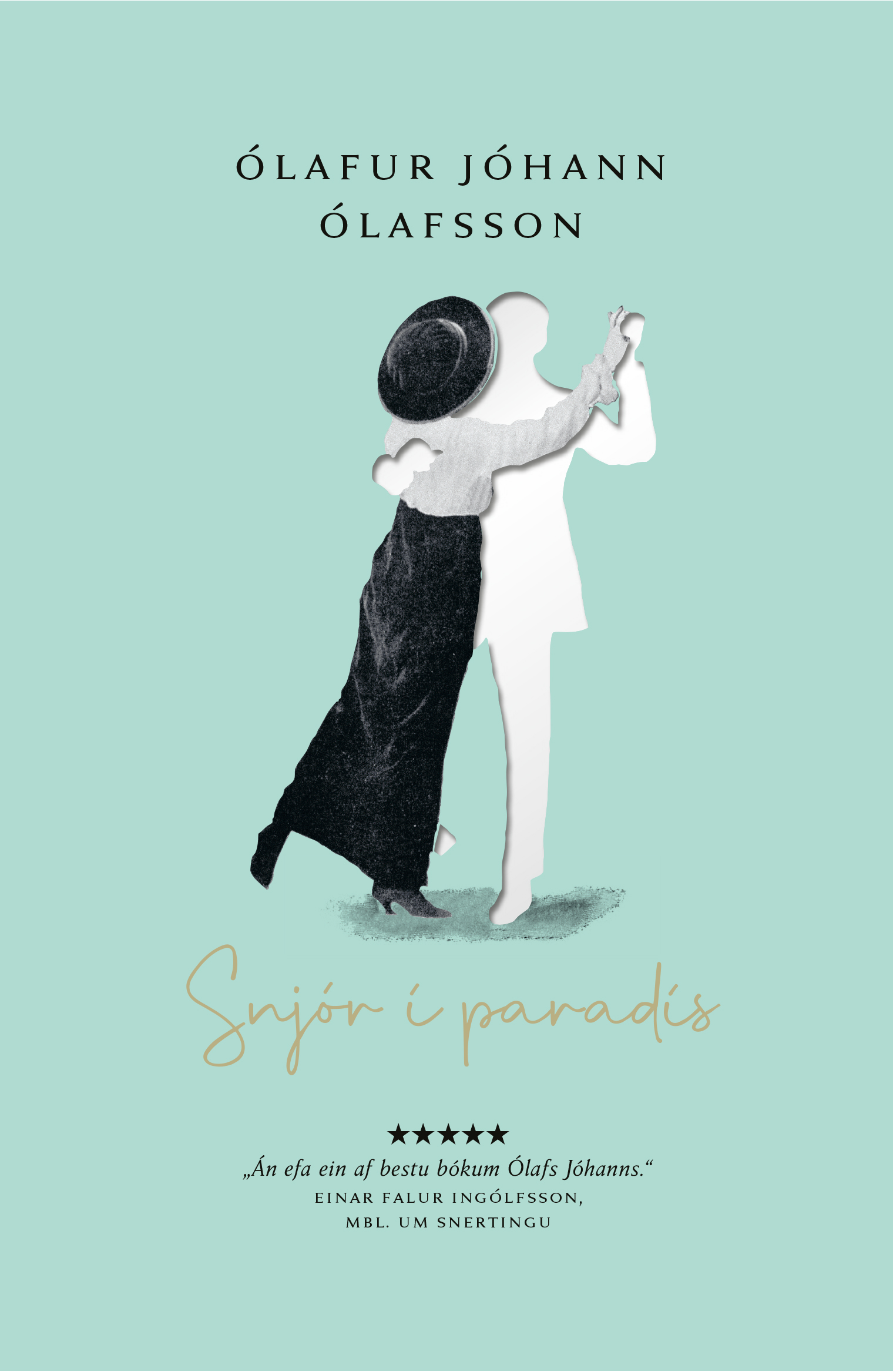
Snjór í paradís (Snow in Paradise)
Read moreSnjórinn kom illa við Kristínu sem óttaðist að hann kynni að setja flugið úr skorðum. Hún gat ekki stillt sig um að hafa orð á því við Harald sem virtist hins vegar engar áhyggjur hafa heldur beinlínis njóta þess að fylgjast með flygsunum svífa til jarðar, ekki síst þegar snjókoman þéttist og vindurinn fór að eiga við hana. Kristín spurði starfsfólk flugfélagsins hvort hætta væri á seinkun, bæði þegar þau innrituðu sig og líka þegar þau voru komin að hliðinu.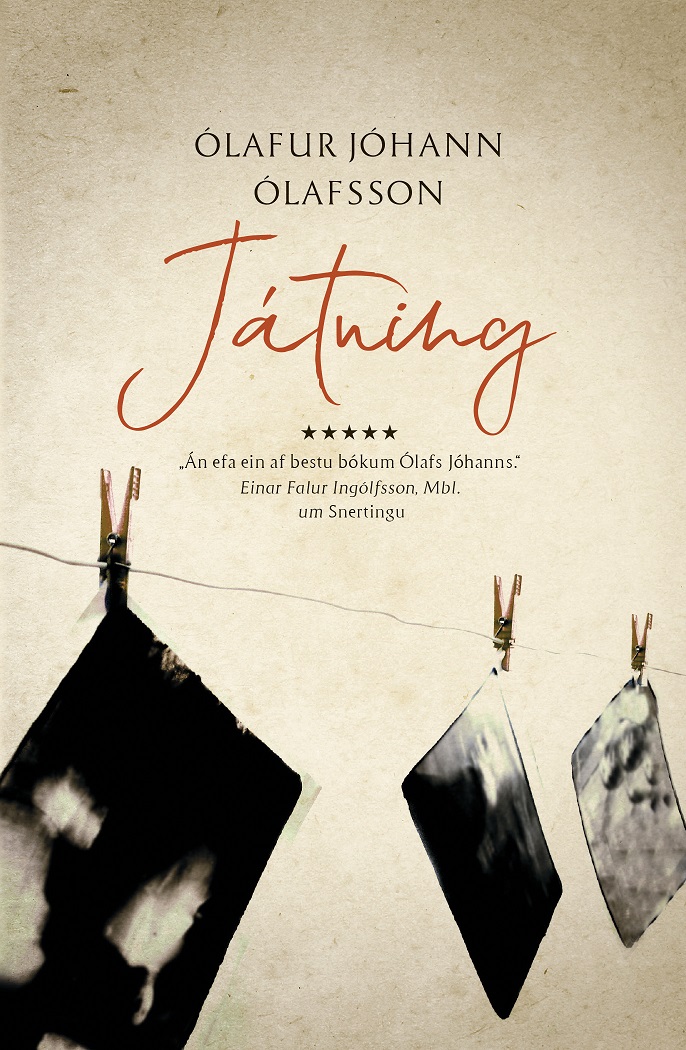
Játning (Confession)
Read moreTveir íslenskir námsmenn, Elísabet og Benedikt, kynnast í Leipzig skömmu fyrir hrun múrsins.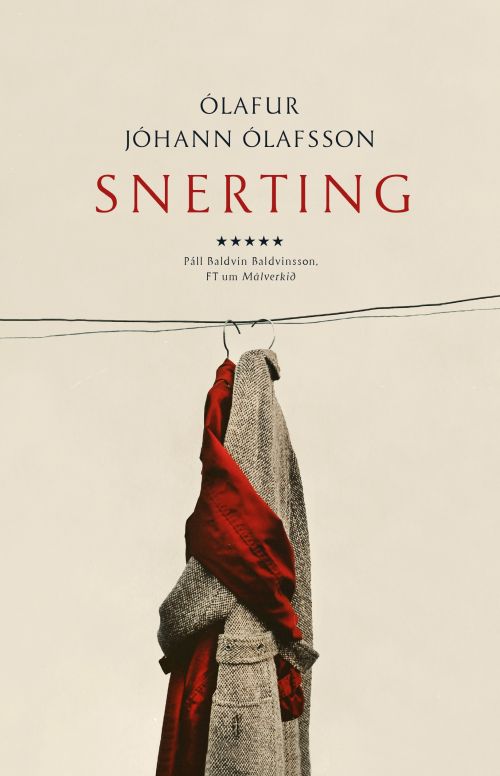
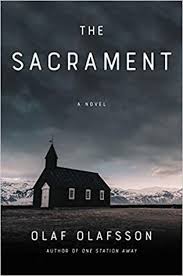
The Sacrament
Read more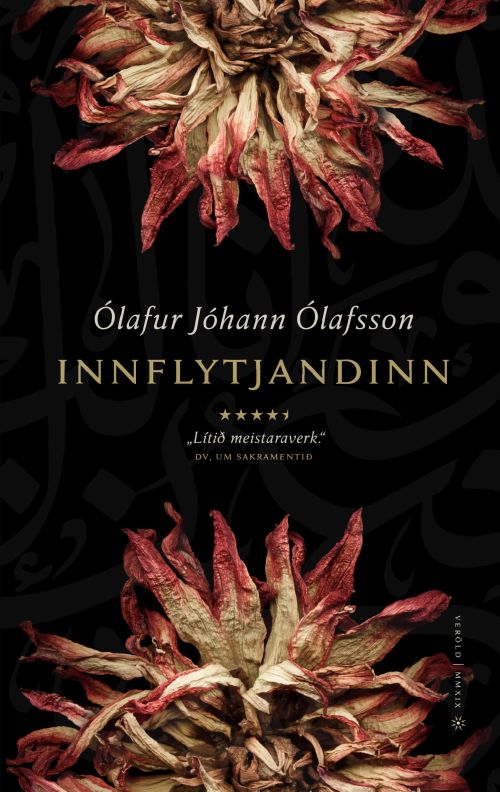
Innflytjandinn (The Immigrant)
Read more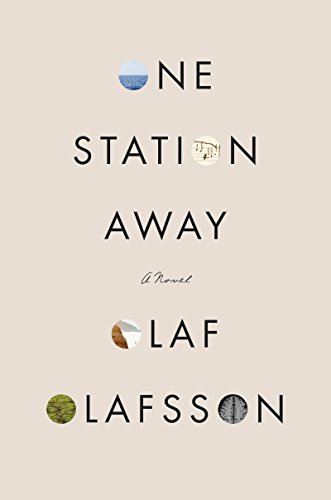
One station away
Read more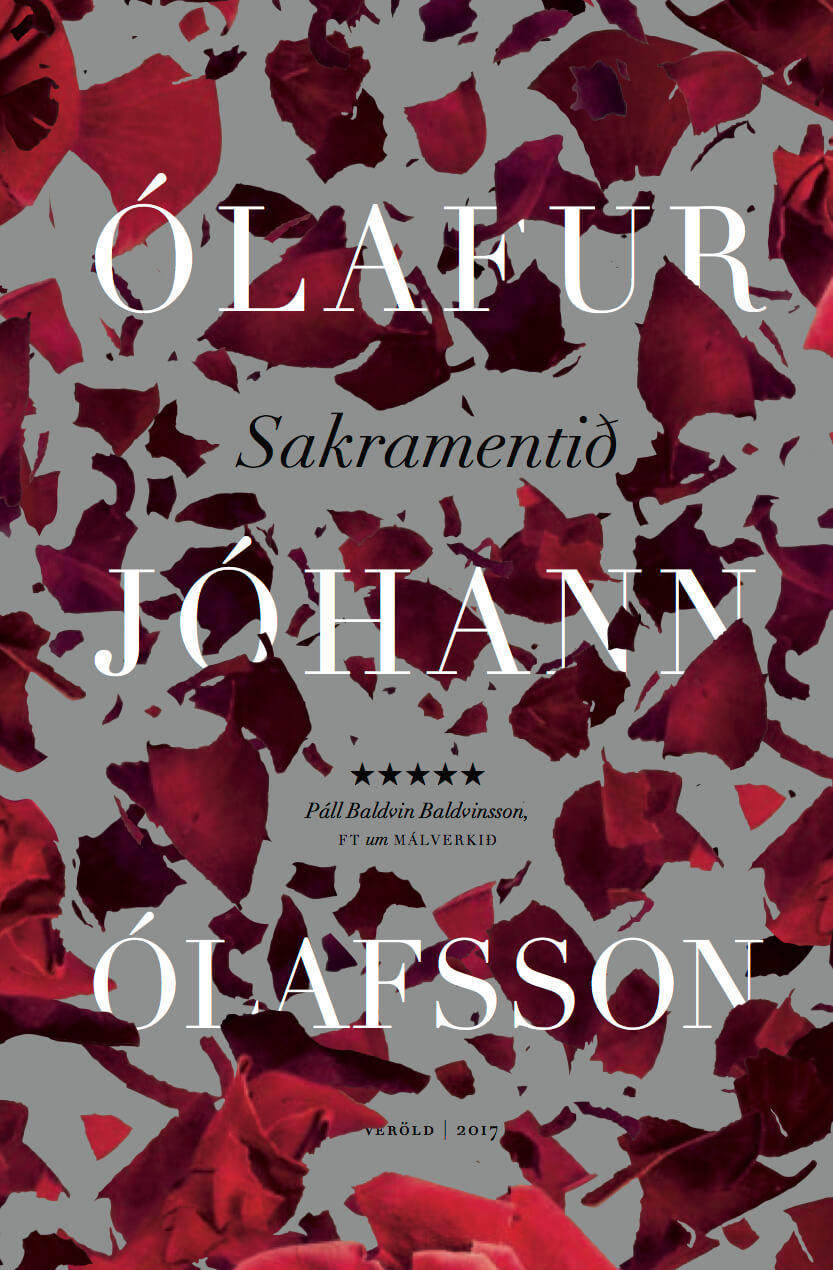
Sakramentið (The Sacrament)
Read more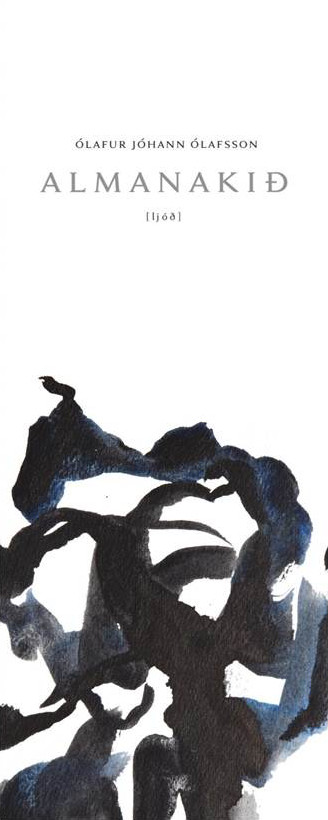
Almanakið (The Almanac)
Read more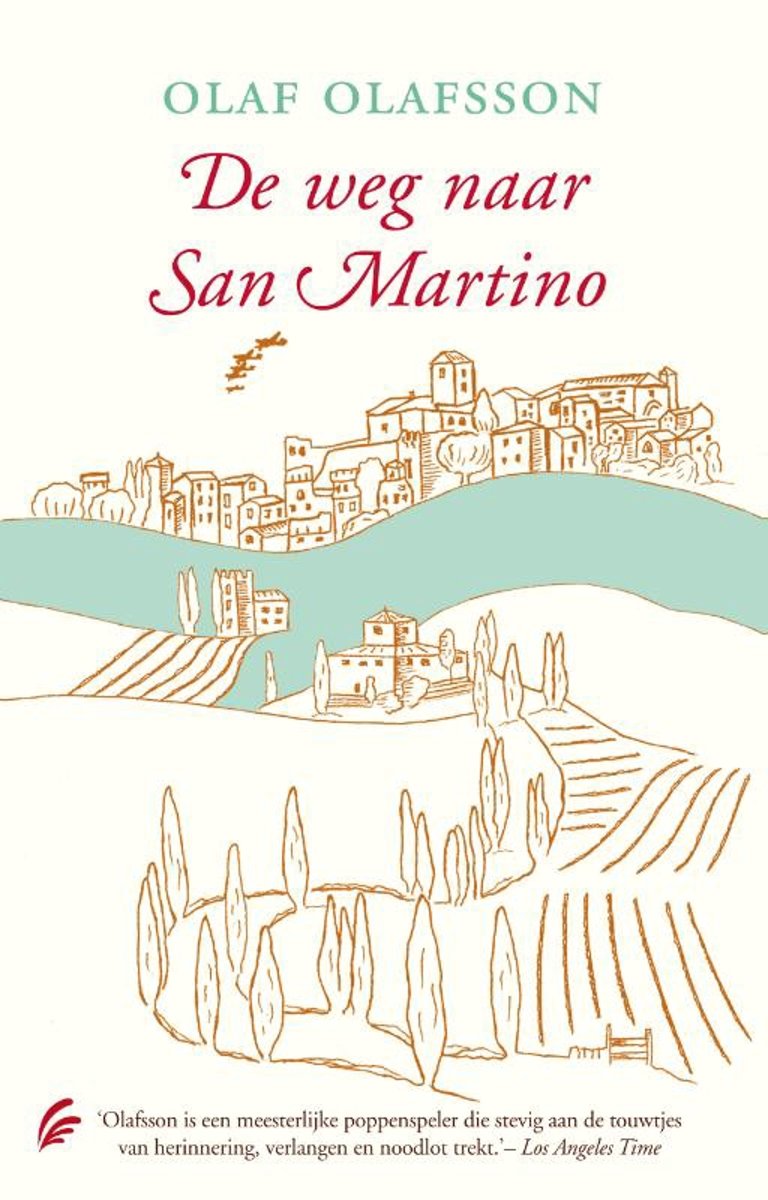
De weg naar San Martino
Read more
